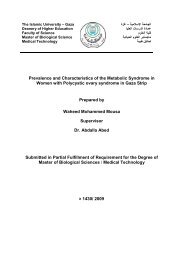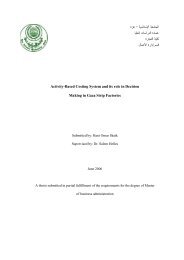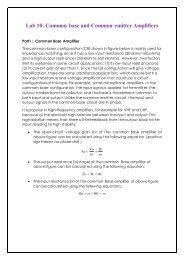A prActicAl guide Benchmarking in european Higher education
A prActicAl guide Benchmarking in european Higher education
A prActicAl guide Benchmarking in european Higher education
You also want an ePaper? Increase the reach of your titles
YUMPU automatically turns print PDFs into web optimized ePapers that Google loves.
The term ‘benchmark<strong>in</strong>g’ was first adapted to bus<strong>in</strong>ess practices <strong>in</strong> 1979 by<br />
the then almost-bankrupt Xerox. Through the systematic and collaborative<br />
comparison of performance with its competitors, Xerox’s aim was to evaluate<br />
itself, to identify its strengths and weaknesses and adapt to constantly chang<strong>in</strong>g<br />
market conditions. <strong>Benchmark<strong>in</strong>g</strong> approaches have been gradually<br />
adopted by many bus<strong>in</strong>esses <strong>in</strong> the context of the quality assurance and<br />
quality enhancement movements, fac<strong>in</strong>g the need to ensure productivity and<br />
effectiveness <strong>in</strong> the face of <strong>in</strong>creas<strong>in</strong>g competition.<br />
<strong>Benchmark<strong>in</strong>g</strong> has a special place among these movements, but first there<br />
are other major routes towards quality and improved performance.<br />
As a ‘health warn<strong>in</strong>g’, it should be emphasised that the situation is not stableon<br />
the contrary, ideas are developed, new names and abbreviations are<br />
<strong>in</strong>troduced regularly and widely-shared views change. Potential practitioners<br />
are therefore advised not to take the follow<strong>in</strong>g as eternal truths cast <strong>in</strong> stone.<br />
The aim here is not to discuss thoroughly all the models available <strong>in</strong> the quality<br />
movement. To rema<strong>in</strong> brief and to the po<strong>in</strong>t, high-lights of some aspects<br />
of some major types of quality assurance models have been presented that<br />
may make them <strong>in</strong>terest<strong>in</strong>g for quality management <strong>in</strong> higher <strong>education</strong><br />
<strong>in</strong>stitutions.<br />
Total Quality Management (TQM)<br />
Total Quality Management, abbreviated to TQM, was “the dom<strong>in</strong>ant theoretical<br />
and empirical paradigm for quality management” (Schroeder, L<strong>in</strong>derman,<br />
Liedtke, & Choo, 2008). Yet, TQM is not a s<strong>in</strong>gle quality assurance model, but<br />
rather a broad movement with many varieties (e.g. Conti, 1993; Dem<strong>in</strong>g, 1993;<br />
Juran & Gryna, 1988). For our purposes, it will be enough to dist<strong>in</strong>guish a<br />
hard and a soft version. Common to all varieties of TQM is the belief that<br />
manag<strong>in</strong>g quality will lead to large scale improvements <strong>in</strong> the organisation<br />
and its performance. While some of the TQM claims may have been<br />
overstatements, it builds on sound pr<strong>in</strong>ciples, applicable <strong>in</strong> public higher<br />
<strong>education</strong> <strong>in</strong>stitutions (Dill, 1999).<br />
A Practical Guide - <strong>Benchmark<strong>in</strong>g</strong> <strong>in</strong> European <strong>Higher</strong> Education<br />
23

















